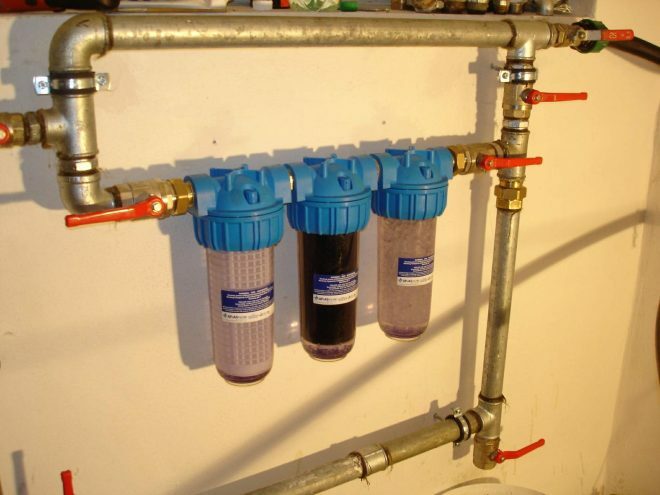- Principle of operation of the pressure switch
- Signs of malfunction of the water level sensor
- How to independently check the pressure switch
- Setting the water level sensor
- How to change the pressure switch
How to check the pressure switch of the washing machine if there is no extra money to call the wizard? If the warranty on a washing machine has expired, you can do it yourself. However, before checking the pressostat of the washing machine, you need to know where it is, what it is and understand the principle of operation of the water level sensor.
The principle of operation of the pressure switch
Each washing machine is equipped with a water level sensor( pressure switch).It serves to supply an electrical signal to the washer controller about the presence or absence of water in the tank for performing further operations on the installed wash program.
A standard pressostat consists of a disc-shaped pressurized case, inside of which an air chamber is located. A tube lowered by the second end into the tank of the machine is connected to it through the nozzle. When water enters the machine, the air pressure in the tube and chamber of the pressure switch increases. The sensitive membrane begins to raise the rod, which presses on the spring-loaded contact plate.

When a certain level of fluid in the tank is reached, the spring plate is clicked to the upper position, closing the electrical circuit of the sensor input lamellae. If the contents of the tank are drained, the pressure in the chamber decreases, the rod goes down and the contact plate switches to the lower position, breaking the electrical circuit. On a signal from the pressure switch, the controller issues control signals to other actuators( a suction pump, engine, intake valve, heater relay).
![]() See also - TOP 10 front-loading washing machines - rated best 2017
See also - TOP 10 front-loading washing machines - rated best 2017
Symptoms of a water level sensor malfunction
Failure or malfunction of the pressure switch leads to malfunctions of the washing machine. Externally, signs of a malfunctioning water level switch may look as follows:
- the machine erases or turns on the heater in the absence of water in it;
- tank overflows with water or vice versa, it is clearly not enough for washing;
- when the rinsing mode is turned on, the liquid is periodically pumped out and supplied;
- the appearance of burning odor and the safety of the heater;
- does not spin laundry.

The appearance of such signs should be a reason to check the operation of the pressostat, for which you need to arm yourself with a screwdriver with interchangeable nozzles, as many manufacturers use fasteners with special heads to protect against unauthorized access.
![]() See also - Do not spin the drum in the washing machine
See also - Do not spin the drum in the washing machine
How to check the pressure switch yourself
The above deviations in the operation of the washing machine may be due to malfunction and other parts, so you need to check the operation of the pressostat before you put a new one. To do this, it should be removed from the machine. Where is the water level sensor in the washing machine? In order to find and check the pressure switch, you must perform the following steps:
- unscrewing the two bolts from the back of the washing machine, you should remove the top cover of the machine with a back shift;
- on the side wall, find the pressure switch fastened with screws, disconnect the connector with wires from it and the hose connected to the fitting using a hose clamp;
- unscrew the fixing bolts and dismantle the unit.

Carefully inspect it and the tube for external damage or blockage. If necessary, clean the tube and fitting. External lamellae on the connector must be clean with no signs of oxidation. In the presence of dirt and corrosion should be cleaned. Performance checks should be carried out in the following order:
- Put a small hose on the fitting and, holding the unit to your ear, blow into the hose. When the sensor contact is triggered, a clear click should be heard.
- Depending on the block design and the number of contact groups, the number of clicks when blowing a hose can be one, two or three. The absence of clicks indicates a malfunction of the device.
- You can make sure that the contacts are activated by using an ohmmeter by connecting it to the corresponding sockets on the input connector of the unit. When the contact is closed and open, the instrument readings will change dramatically. Electrical circuit connections of the contact groups of the pressure switch can be found in the operating instructions of the washing machine.
![]() See also - Washing machine does not drain - what to do?
See also - Washing machine does not drain - what to do?
Water Level Sensor Setup The pressostat is adjusted to the required amount of liquid using two adjustment screws, one of which( central) is used to set the moment of contact connection, and the second( peripheral) is used to set the moment of their break. There may be several contact groups or sensors depending on the operation modes and model of the washing machine. Programs of different washing modes can also use a different amount of liquid in the washing machine, for example, an economical or gentle wash, in which the tank is half-filled.
Fine adjustment of the alarm is performed by specialists at the factory, and the position of the adjustment screws is fixed with paint or varnish. Changing their position is not recommended, as unbalancing the settings will cause violations in the streamlined wash program. In order to properly configure the unit, you need to know how much liquid the machine needs at each stage of all washing modes, and in accordance with this, set the moments of switching on and off contact groups. For example, the pressure switch of the Bosch washing machine has three contact groups configured for full mode, economy mode and tank overflow.
![]() See also - The washing machine jumps while pressing
See also - The washing machine jumps while pressing
The procedure for replacing the pressure switch
Once you are convinced that the water level sensor is defective, you can change it to a new one. In the event of a malfunction of the pressure switch, you can repair the washing machine with your own hands. Repair of the water level sensor does not make sense, since its case is non-separable and attempts to disassemble will lead to breakage of internal parts. The new water level sensor should be exactly the same type and name as the old one, corresponding to the brand and model of the machine, taking into account the capacity of the loading drum. It also does not hurt to check before installation. The unit is installed in the reverse sequence of actions for dismantling:
- fastening into place with fixing screws;
- hose connection to the fitting and tightening the clamp;
- wiring with connector;
- installation of the top cover and tightening the fixing bolts.
After you finish the repair, you should turn on the washing machine and check the work in several modes or perform a control wash.


